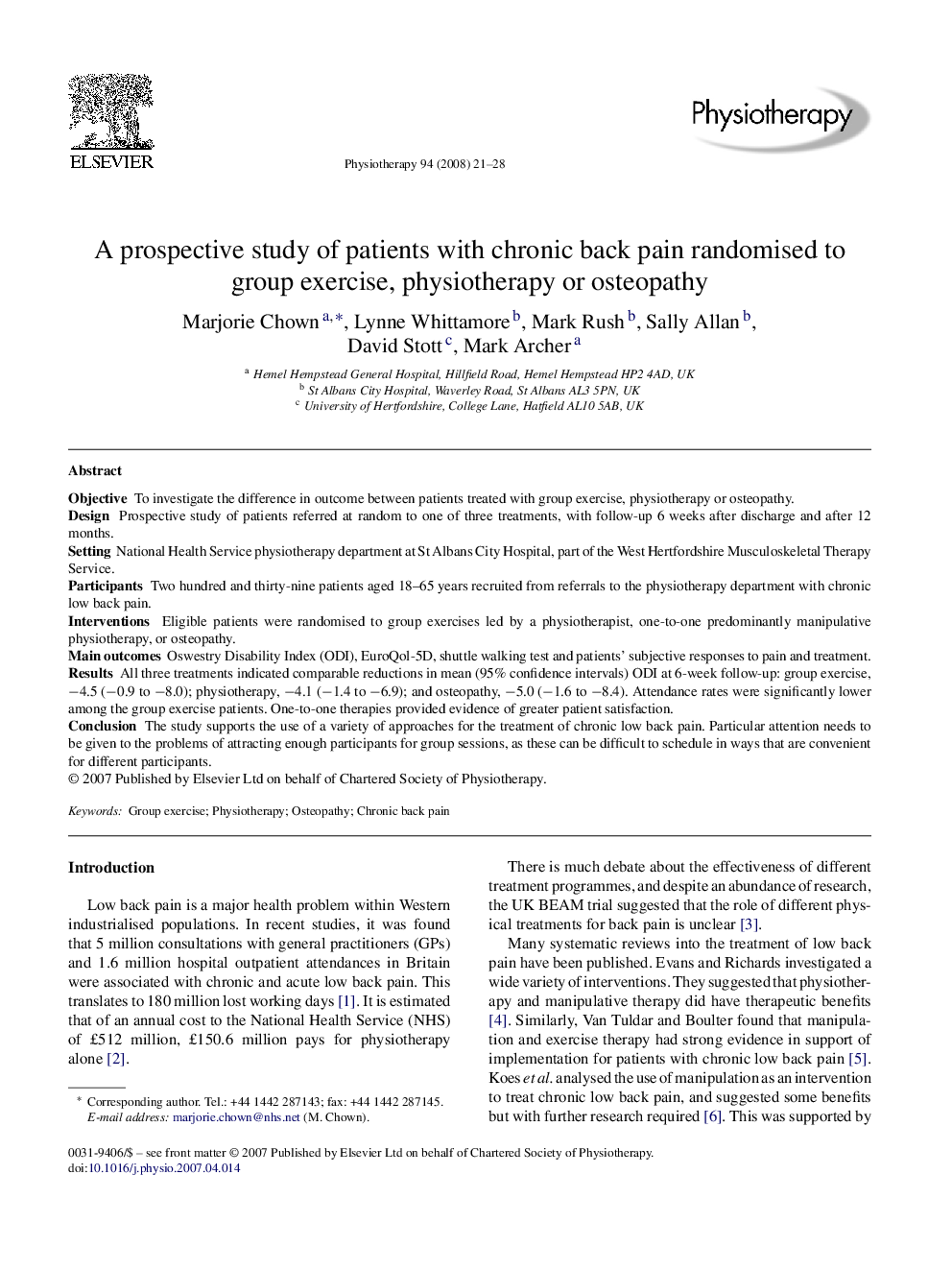| Article ID | Journal | Published Year | Pages | File Type |
|---|---|---|---|---|
| 2627452 | Physiotherapy | 2008 | 8 Pages |
ObjectiveTo investigate the difference in outcome between patients treated with group exercise, physiotherapy or osteopathy.DesignProspective study of patients referred at random to one of three treatments, with follow-up 6 weeks after discharge and after 12 months.SettingNational Health Service physiotherapy department at St Albans City Hospital, part of the West Hertfordshire Musculoskeletal Therapy Service.ParticipantsTwo hundred and thirty-nine patients aged 18–65 years recruited from referrals to the physiotherapy department with chronic low back pain.InterventionsEligible patients were randomised to group exercises led by a physiotherapist, one-to-one predominantly manipulative physiotherapy, or osteopathy.Main outcomesOswestry Disability Index (ODI), EuroQol-5D, shuttle walking test and patients’ subjective responses to pain and treatment.ResultsAll three treatments indicated comparable reductions in mean (95% confidence intervals) ODI at 6-week follow-up: group exercise, −4.5 (−0.9 to −8.0); physiotherapy, −4.1 (−1.4 to −6.9); and osteopathy, −5.0 (−1.6 to −8.4). Attendance rates were significantly lower among the group exercise patients. One-to-one therapies provided evidence of greater patient satisfaction.ConclusionThe study supports the use of a variety of approaches for the treatment of chronic low back pain. Particular attention needs to be given to the problems of attracting enough participants for group sessions, as these can be difficult to schedule in ways that are convenient for different participants.
